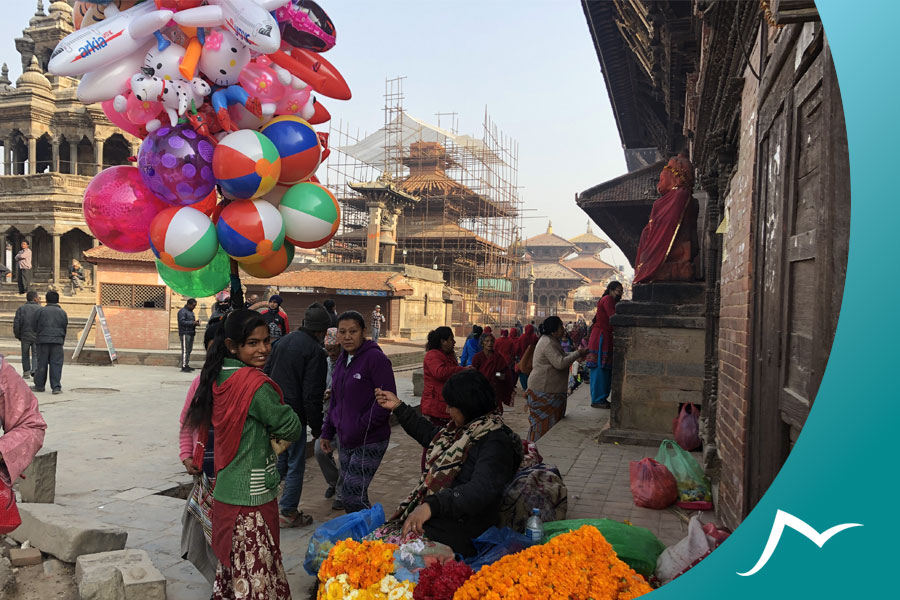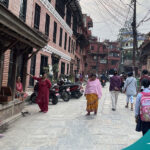As I stood amid Patan Durbar Square, I was awe-struck by the beauty of the historic buildings and monuments surrounding me. As a lover of history and culture, I have always dreamt of exploring its rich heritage sites. And standing in the heart of Patan Durbar Square, I knew that my dream had finally come true. The intricate carvings on the wooden pillars, the towering pagoda-style temples, and the intricately designed palaces were a feast for the eyes and a testament to the artistic prowess of the Nepali people.
The bustling streets, filled with the sounds of local people, ringing bells, and the smell of incense, added to the charm of the square. I couldn’t help but feel grateful for the opportunity to visit this magnificent site and immerse myself in the vibrant culture of Nepal.
Introduction
Patan Durbar Square is one of Nepal’s most historically and culturally significant landmarks. This ancient square is in the heart of Patan city, just a few kilometres south of the capital, Kathmandu. It is a complex of stunning temples, palaces, and other impressive structures that date back to the 16th century.
The square was once the royal palace complex of the Malla dynasty, which ruled the Kathmandu Valley from the 12th to the 18th century. Patan Durbar Square was at the centre of their kingdom and played an essential role in the region’s political and cultural development. It was also a hub of trade and commerce, attracting merchants from all over Asia.
Today, Patan Durbar Square is a UNESCO World Heritage Site and a popular tourist destination. Visitors can explore the numerous temples and monuments, including the famous Krishna Mandir, Taleju Bhawani Temple, and the Golden Temple. The square is also home to a museum that showcases the region’s rich cultural and historical heritage.

This blog post aims to give readers a comprehensive overview of Patan Durbar Square and its significance in Nepali culture and history. Readers can expect to learn about the square’s historical background, architectural features, religious and cultural significance, and preservation and conservation efforts through this post.
Historical Background
As I mentioned above, Patan Durbar Square was originally a royal palace complex of the Malla dynasty. The Malla dynasty was a powerful and influential ruling family that played a significant role in shaping the region’s political, cultural, and social landscape. The Malla dynasty established Patan as its capital city and developed its infrastructure and architectural marvels. Patan Durbar Square was the heart of the Malla kingdom also a hub of trade and commerce. The square was also a centre of art, culture, and religion, where artists and artisans thrived and produced intricate paintings, wood and stone carvings, metalwork, and pottery.
The Malla dynasty was eventually succeeded by the Shah dynasty in the 18th century, who continued to develop Patan Durbar Square and preserve its rich cultural heritage. The Shah dynasty expanded the square’s architectural marvels and significantly contributed to the region’s arts and crafts. They were patrons of the local artisans, providing them with resources and encouragement to produce their intricate crafts.
Patan Durbar Square witnessed many significant historical events, including the unification of Nepal under King Prithvi Narayan Shah. Shah is credited with unifying the small kingdoms in the region into a single unified country. He conquered Patan Durbar Square and became part of his kingdom in the 18th century. The square was then transformed into a military garrison, and some architectural marvels were destroyed.
However, in the 20th century, Patan Durbar Square was restored to its former glory, thanks to the efforts of the government and the local community. The square was recognized as a UNESCO World Heritage Site in 1979, which helped to bring international attention to the importance of preserving and conserving the site.
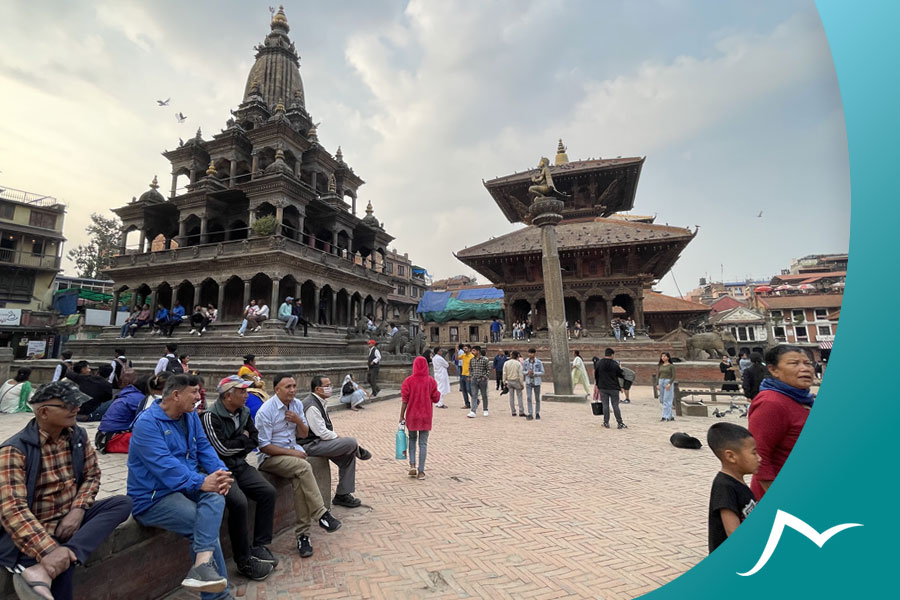
Today, visitors can explore the numerous temples and monuments in Patan Durbar Square, each with its unique architectural style and historical significance. Some must-visit sites include the Krishna Mandir, Taleju Bhawani Temple, Golden Temple, and Mahaboudha Temple. These temples are significant for their religious importance, architectural beauty, and intricate carvings.
Architectural Features of Patan Durbar Square
Patan Durbar Square is a cultural and historical marvel in Nepal, filled with temples, palaces, and monuments that showcase the country’s rich heritage. This article will explore the architectural features of Patan Durbar Square in detail.
Newari, Malla, and Nepalese styles
The architecture in Patan Durbar Square is primarily influenced by the Newari, Malla, and Nepalese styles. The Newari style is the most prominent in the square, characterized by intricate wood carvings, stone carvings, and metalwork. On the other hand, the Malla style is known for its simple and elegant designs, featuring red brick and terracotta. The Nepalese style is a fusion of Indian and Tibetan architectural styles and is characterized by intricate designs and carvings.
Krishna Mandir
One of the most famous buildings in Patan Durbar Square is the Krishna Mandir. This temple was built in the 17th century and is dedicated to Lord Krishna. The temple’s architecture perfectly exemplifies the Newari style, featuring intricate wood and stone carvings. The temple is also adorned with metalwork and has a unique design resembling a mandala. Visiting the Krishna Mandir is essential for anyone interested in Nepal’s rich cultural heritage.

Taleju Bhawani Temple
Another must-visit site in Patan Durbar Square is the Taleju Bhawani Temple, built in the 16th century and dedicated to the goddess Taleju Bhawani. The temple’s architecture is an elegant blend of the Newari and Malla styles. Its roof is adorned with copper and gold-plated sheeting, and the interior features intricate wood carvings and metalwork.
Golden Temple
The Golden Temple is another significant Patan Durbar Square monument dedicated to the goddess Tara. The temple is known for its exquisite architecture and is a fine example of the Nepalese style. The temple is adorned with gold-plated copper sheeting, and its interior is decorated with intricate wood carvings and metalwork.
Mahaboudha Temple
The Mahaboudha Temple, also known as the Temple of a Thousand Buddhas, is another significant temple in Patan Durbar Square. The temple’s walls are adorned with terracotta tiles, each with a Buddha image. The temple’s architecture is a fine example of the Malla style and is unique in its design. Visiting the Mahaboudha Temple is essential for anyone interested in Nepal’s history and culture.
Local Artisans
Apart from these prominent buildings, Patan Durbar Square is also home to numerous temples and monuments, each with unique architectural features. The square is known for its intricate wood carvings, stone carvings, and metalwork. The local artisans are skilled in these traditional crafts and continue to produce exquisite pieces of art that are admired by visitors worldwide.
Patan Durbar Square is a testament to Nepal’s rich cultural heritage and is a must-visit site for anyone interested in the history and architecture of the region. The square boasts numerous temples, palaces, and monuments, each with its unique architectural style and historical significance.
Religious Significance
Patan Durbar Square is a popular tourist destination and a significant religious site in Nepal. The square has several temples, shrines, and statues that hold great religious importance for Hindus and Buddhists.
The Krishna Temple is one of the most notable religious sites in Patan Durbar Square. Dedicated to Lord Krishna, this temple is a popular destination for Hindu devotees who come to offer prayers and seek blessings.
Another important site in the square is the Taleju Temple. Considered one of the oldest temples in Nepal, the Taleju Temple is dedicated to the goddess Taleju Bhawani, a form of the Hindu goddess Durga. The temple is closed to non-Hindus but is open to Hindus who come to offer prayers and perform religious ceremonies.
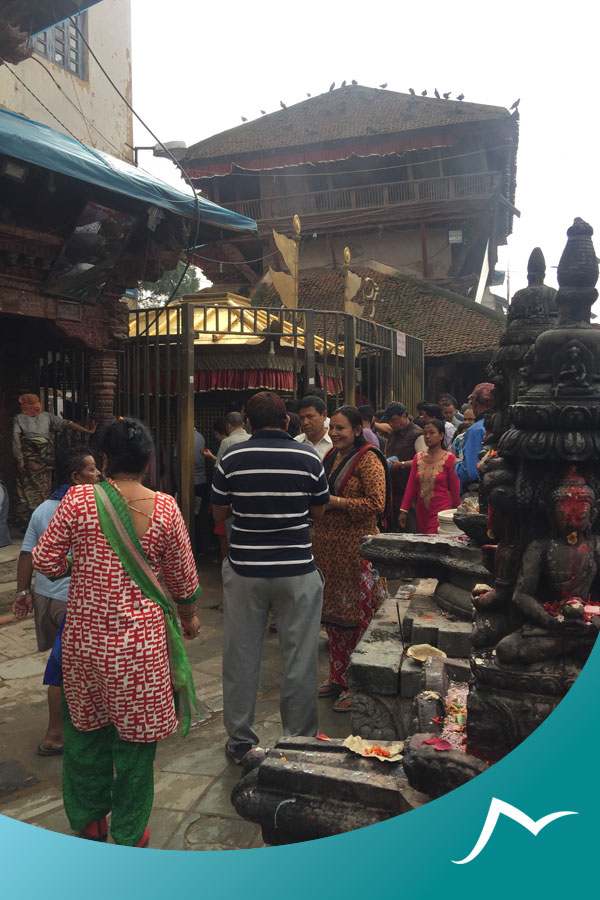
The Patan Durbar Square also features several Buddhist sites, including the Hiranyavarna Mahavihara (Golden Temple) and the Mahaboudha Temple. The Mahaboudha Temple is particularly significant, modelled after the famous Mahabodhi Temple in Bodh Gaya, India, where Lord Buddha is said to have attained enlightenment.
The square is also home to several statues and shrines that hold religious significance for Hindus and Buddhists. These include the Ganesh Temple, the Bhimsen Temple, Bagalamukhi Temaple and the Matsyendranath Shrine.
Bagalamukhi is a famous Hindu goddess, worshipped for her ability to silence and control one’s enemies. She is believed to reside in the Bagalamukhi Temple in Patan Durbar Square, one of Nepal’s most significant religious sites.
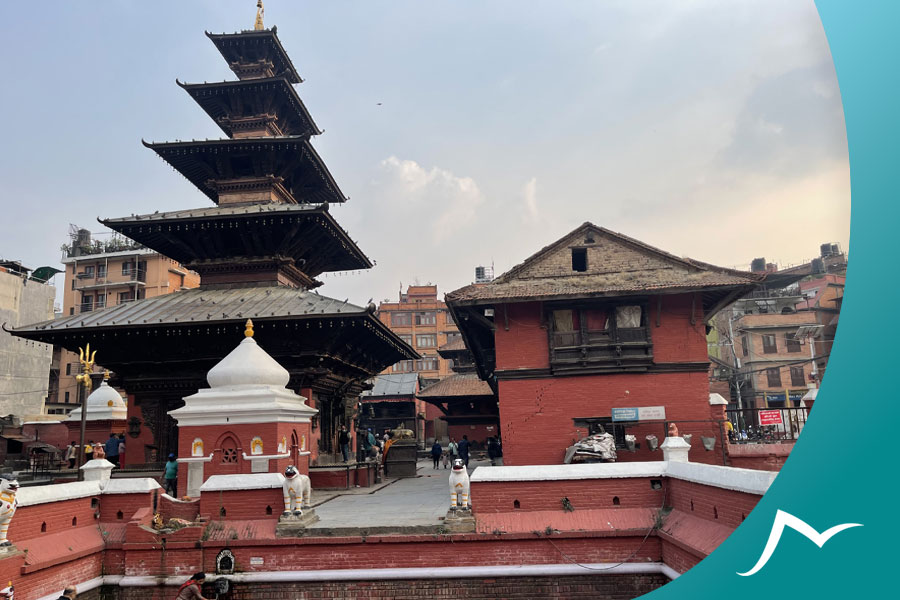
The temple is dedicated to Bagalamukhi and attracts thousands of devotees every year who come to seek her blessings and protection. The goddess is believed to possess the power to defeat enemies and provide victory over obstacles. Many people also come to pray to Bagalamukhi for good health, wealth, and success in their endeavours. The Bagalamukhi Temple is known for its beautiful architecture and intricate carvings.
Apart from these key structures, Patan Durbar Square is home to many other smaller temples and shrines. These religious sites play a significant role in the lives of the local people, who come here to pray, meditate, and offer offerings. The rituals and traditions associated with these temples are an essential part of the cultural heritage of Nepal. Many festivals and ceremonies are held in these temples annually, attracting devotees from all over the country.
Cultural Significance of Patan Durbar Square
Patan Durbar Square is a testament to Nepal’s rich cultural heritage and represents the Nepali people’s identity. Here are some of the cultural aspects of Patan Durbar Square:
Festivals and Celebrations
Patan Durbar Square is a hub for cultural activities and hosts many festivals and celebrations throughout the year, bringing the community together in celebration. One of the most significant festivals celebrated in the square is the Rato Machhindranath Jatra. This month-long festival is dedicated to the god of rain, Machhindranath, and involves a procession of a chariot carrying a statue of Machhindranath through the streets of Patan. The festival is a time for Nepalis to come together to pray for a good harvest and to celebrate their cultural heritage.
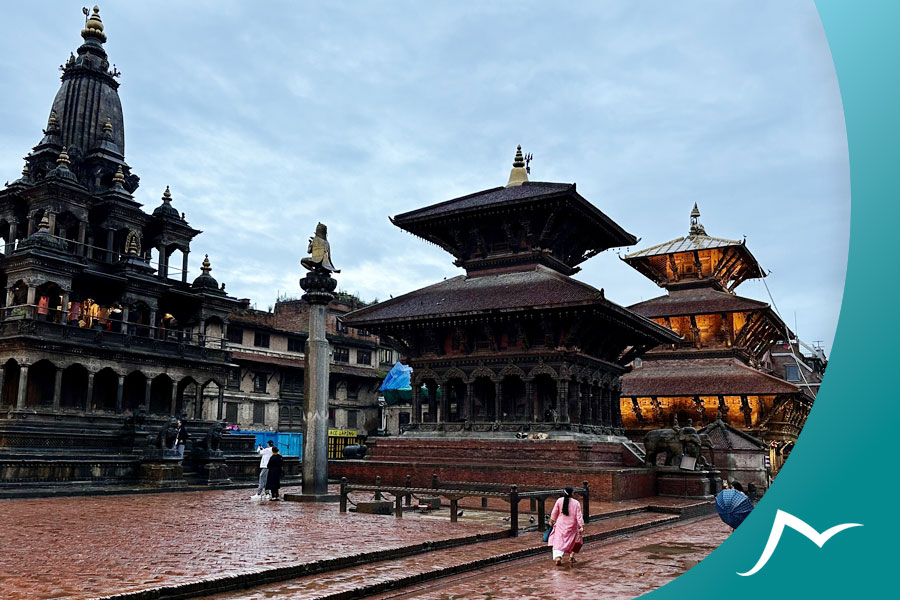
Krishna Janmashtami, the festival celebrating the birth of Lord Krishna, is also celebrated with great enthusiasm in Patan Durbar Square. The festival involves the decoration of the Krishna Mandir temple and offering of prayers and hymns to Lord Krishna. The festival is a reminder of the deep religious and cultural ties that exist in Nepal.
Traditional Arts and Crafts
In addition to the festivals and celebrations, Patan Durbar Square is home to various local arts and crafts. The square has been a centre for traditional crafts such as metalwork, pottery, and weaving for centuries. Visitors to the square can witness the skills of the local artisans and purchase handmade crafts as souvenirs. The Patan Museum, located in the square, also showcases Nepal’s traditional arts and crafts, providing visitors with a deeper understanding of the cultural significance of these crafts.
Architecture
The architecture of Patan Durbar Square is a testament to the rich cultural heritage of Nepal. The square has many temples and palaces, each with its unique architectural style. The most notable structures include the Krishna Mandir temple, built in the 17th century and considered one of the finest examples of traditional Nepali architecture, and the Patan Museum, which is housed in a restored palace and showcases traditional Nepali architecture and art.
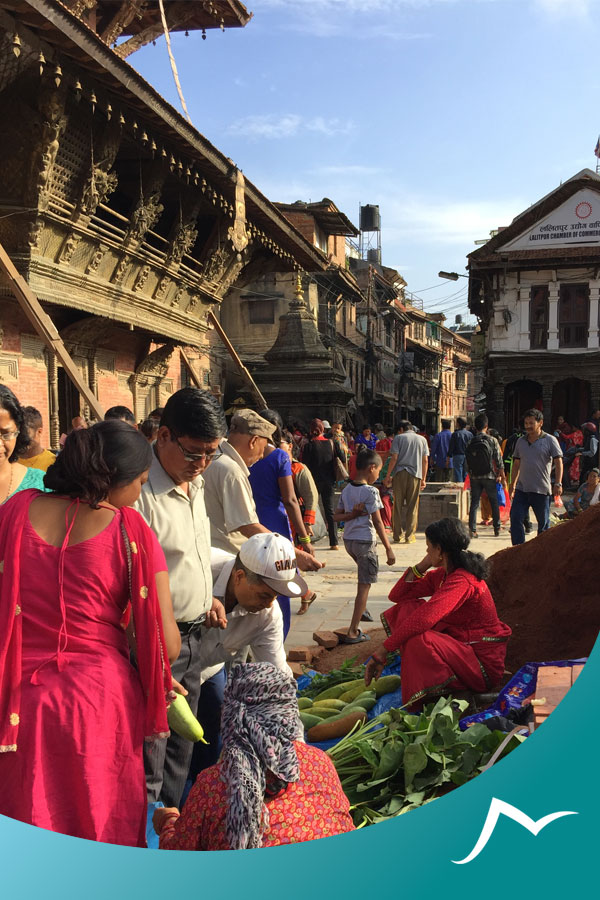
Culinary Delights
Patan Durbar Square is also known for its culinary delights. The square is home to many restaurants and cafes serving traditional Nepali cuisine, specially Newari kaja, allowing visitors to experience Nepal’s unique flavours and spices. From momos, Choela-Baji to dal bhat, Nepal’s cuisine reflects the country’s cultural diversity.
Preservation and Conservation of Patan Durbar Square
Patan Durbar Square is an important historical and cultural landmark and a symbol of Nepali identity and heritage. However, like many other heritage sites worldwide, it faces numerous challenges regarding preservation and conservation.
Natural Disasters and Other Threats
One of the biggest challenges facing Patan Durbar Square is natural disasters. Nepal is in a seismically active region and has been hit by devastating earthquakes in the past. The earthquake in 2015 caused extensive damage to many of the buildings and monuments in Patan Durbar Square. However, the Nepali government and international organizations such as UNESCO have significantly tried restoring the damaged structures and preserving the square’s heritage.
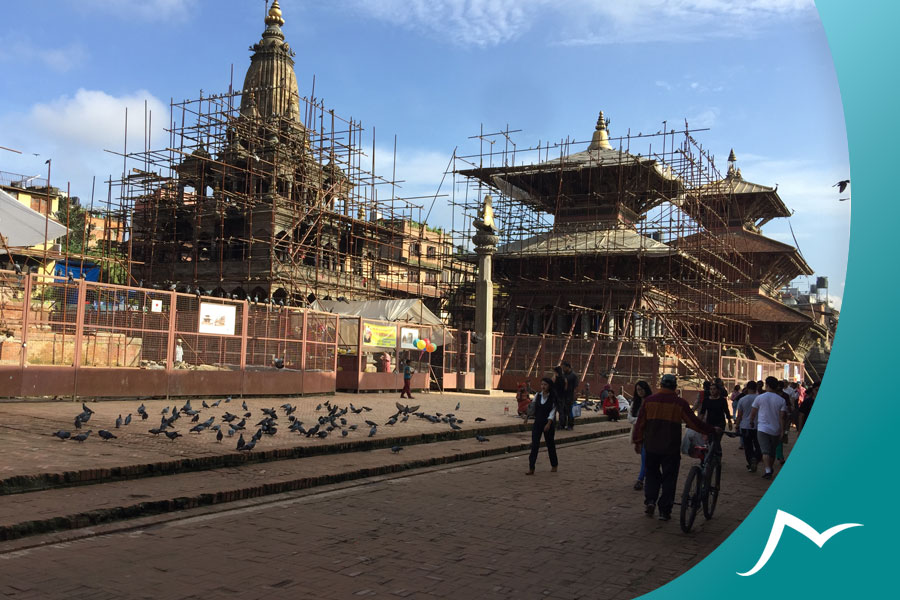
Human activities also pose a threat to the preservation of the square. Pollution, encroachment, and lack of proper maintenance are some issues that must be addressed. In addition, the large number of tourists visiting the square can also have a negative impact if not managed properly.
Preservation and Conservation Efforts
Despite the challenges, several efforts are being made to preserve and conserve Patan Durbar Square. The Nepali government, in collaboration with UNESCO, has undertaken restoration projects to repair and maintain the damaged buildings and monuments. The local community has also actively conserved the square by creating awareness about preserving cultural heritage and organizing events to showcase local arts and crafts.
Furthermore, the designation of Patan Durbar Square as a UNESCO World Heritage Site in 1979 has brought international attention to its cultural and historical significance, leading to increased efforts to preserve and conserve it. The designation has also helped to increase tourism, which in turn generates revenue for the local community and provides an incentive for preservation and conservation.
Rebuilding and Future Plans
As of April 2023, significant progress has been made in rebuilding and restoring Patan Durbar Square. Major restoration projects have been completed on several buildings and monuments, including the Krishna Mandir, Bhimsen Temple, and the Sundari Chowk.
In the future, there are plans to develop a sustainable tourism model that will ensure that the square is preserved while attracting visitors. The development of infrastructure such as visitor centres, restrooms, and garbage disposal facilities will help manage many tourists and reduce tourism’s negative impact on the square.
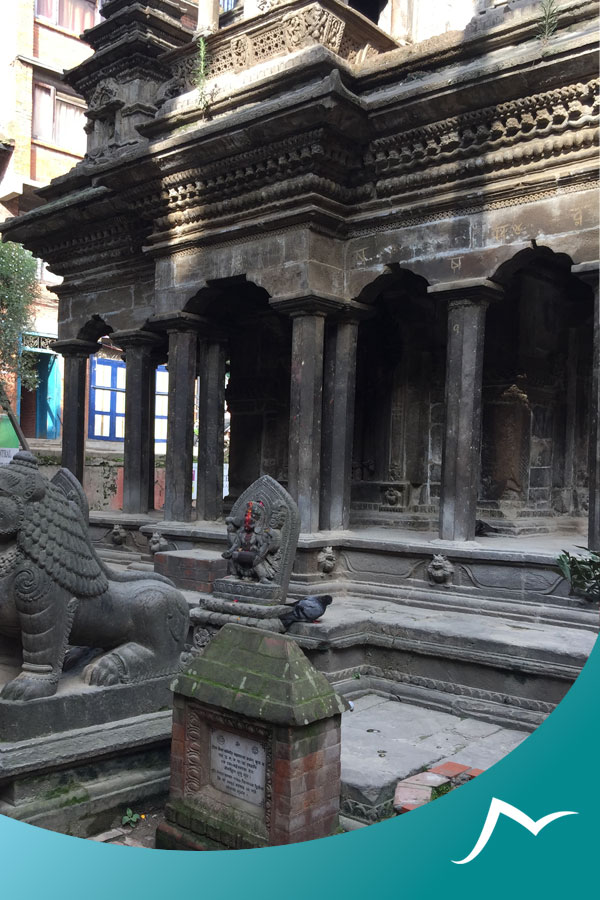
The preservation and conservation of Patan Durbar Square is a vital task that requires the collective efforts of the government, local community, and international organizations.
Conclusion
As someone who has been privileged to visit Patan Durbar Square, I can attest to the site’s incredible cultural and historical significance. The intricate wood carvings, metalwork, and stone carvings found in the temples and buildings are a testament to the diverse architectural styles used in Nepalese construction. I was fascinated by the various dynasties that had ruled over the region and their contributions to its development. But it was the religious and cultural significance of the square that truly captivated me. The temples and monuments dedicated to deities hold great religious importance and serve as sites for traditional rituals carried out for generations.
The community’s rich cultural practices, such as the vibrant festivals and celebrations and the local arts and crafts on display, make Patan Durbar Square an integral part of Nepali cultural heritage. However, the challenges that the site faces in terms of preservation and conservation must be addressed. By being mindful of our actions, respecting local traditions, and supporting preservation efforts, we can make a difference and help preserve this incredible cultural treasure.
